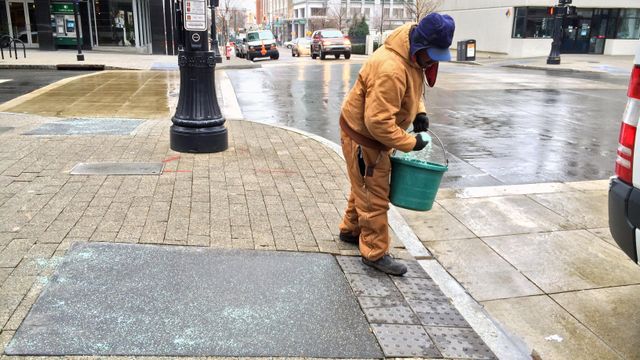DOT to start treating icy roads Tuesday night
With rain in the forecast throughout the day Tuesday, the North Carolina State Department of Transportation won't spread brine on Triangle roads before any freezing precipitation arrives.
Posted — UpdatedOfficials said Tuesday morning that DOT maintenance crews will head home during the midday hours Tuesday and return at about 10 p.m. to start treating roads with salt and sand.
"Unfortunately, because of the rain, we couldn't brine, which is our number one effort against ice," DOT spokesman Steve Abbott said.
The National Weather Service put much of the central and eastern part of the state under a winter storm watch from Tuesday evening until noon Wednesday. Freezing rain could produce up to a quarter of an inch of ice on surfaces by Wednesday morning.
Precipitation could begin around 7 p.m. and is possible through midday on Wednesday. The amount of ice will vary, but areas east of Raleigh could see up to a quarter-inch, the minimum associated with the potential for power problems.
When DOT crews arrive Tuesday evening, they will spread salt and sand on bridges, ramps and other traditional trouble spots across the area.
"When it gets light out and traffic starts showing up, that's when we'll find out about more trouble spots," Abbott said. "The salt can melt some of the ice, and the sand acts sorts of as sand paper, so when traffic gets on it, it hits the sand, grinds the ice, breaks it up and it melts faster that way."
Crews will remain on call throughout the night and early morning hours Wednesday, officials said.
North Carolina State Highway Patrol officials said they plan to have extra troopers on standby Wednesday morning.
"We understand with the next 24 to 48 hours the call for service will be increased throughout the state, and we just want to be sure we have enough troops on the highway to provide service to the motoring public," Sgt. Michael Baker said. "We're asking people to be patient, to use good judgment. We're anticipating up to a quarter of an inch throughout different parts of the state."
First, don't go out unless you absolutely have to. If you must, slow down and leave plenty of space between you and other vehicles. Do not use cruise control, and drive smoothly without sudden accelerating, braking or turning.
A slide or skid can be unnerving. Keep these maneuvers in mind when driving; better yet, practice in an empty parking lot before you have to use them. Use the same maneuver for front-wheel, rear-wheel and all-wheel drive vehicles. In all cases:
- Don’t panic.
- Take your foot off of the accelerator.
- If you have to use the brakess, use them gently (antilock brakes should be applied with gentle, steady pressure; for standard, non-ABS brakes, pump the brake pedal gently to avoid locking up).
- Wait for the car to slow down enough to regain traction before gently accelerating.
- Yield the right of way at intersections.
- Steer your vehicle in the direction that your rear wheels are skidding.
- Avoid focusing on what your vehicle may be headed toward and instead focus on getting out of the skid.
- Shift into neutral.
- Don’t try to steer immediately.
- When your vehicle begins to slow down, steer in the direction that you want your vehicle to go.
- Put the vehicle into gear and gently accelerate.
• Credits
Copyright 2024 by Capitol Broadcasting Company. All rights reserved. This material may not be published, broadcast, rewritten or redistributed.






